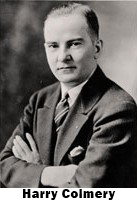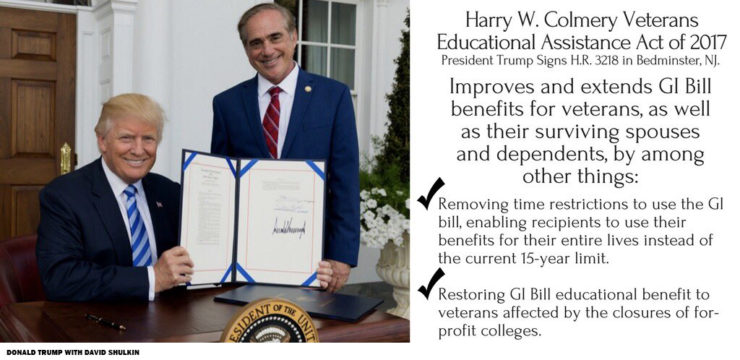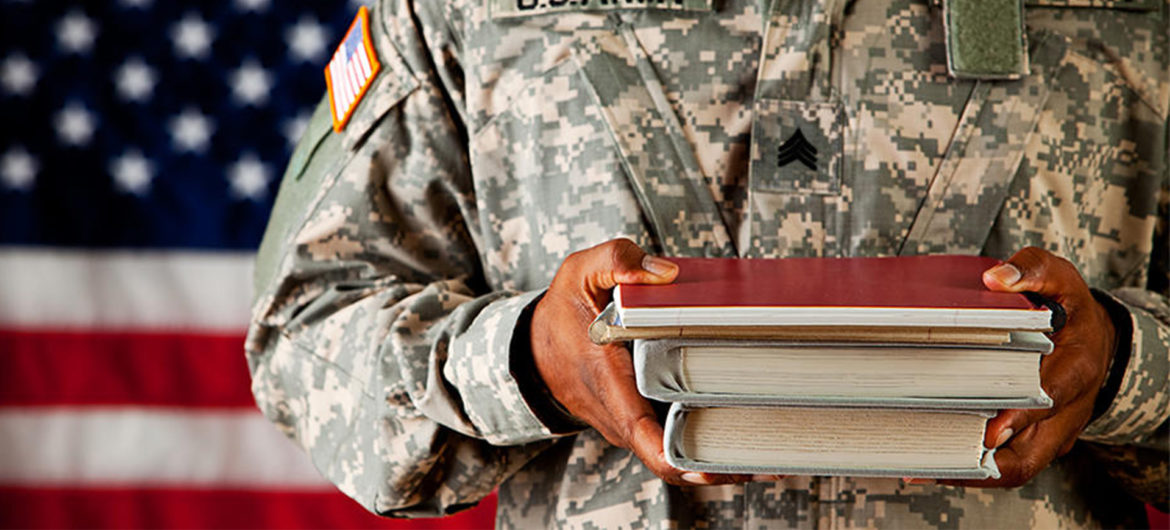With Washington State's recent Collegiate Purple Star designation, Assistant Professor and Veterans Club sponsor Chris Carpenter, wanted to provide some background on the history of Veteran education.
The signing of The Servicemen’s Readjustment Act of 1944 is one event in a long line of significant events in the history and current state of education. But this particular event started even before FDR signed the Act on June 22, 1944. The seeds can be seen in the formation of The American Legion in 1919. The Legion was chartered by Congress as a patriotic veteran’s organization which focused on “service to veterans, servicemembers and communities” (The American Legion, 2020).
 Assimilation back into society can be a rough road for many veterans. This was the case after WWI. Over 4.7 million American men and women entered military service in 1917. At the war’s end, there were not enough jobs in the labor market to accommodate these returning veterans and many could not make ends meet even with some form of government assistance (History.com Editors, 2019). Congress passed the Bonus Act of 1924 but this did no help as the bonuses were not easily attained and took almost twenty years to finally be paid out. The Great Depression had some effect on this as well.
Assimilation back into society can be a rough road for many veterans. This was the case after WWI. Over 4.7 million American men and women entered military service in 1917. At the war’s end, there were not enough jobs in the labor market to accommodate these returning veterans and many could not make ends meet even with some form of government assistance (History.com Editors, 2019). Congress passed the Bonus Act of 1924 but this did no help as the bonuses were not easily attained and took almost twenty years to finally be paid out. The Great Depression had some effect on this as well.
“Never again do we want to see the honor and glory of our nation fade to the extent that her men of arms, with despondent heart and palsied limb, totter from door to door, bowing their souls to the frozen bosom of reluctant charity.”
American Legion Past National Commander Harry Colmery, after helping draft the Servicemen’s Readjustment Act in the winter of 1943-1944
Fast forward to December 15, 1943, when Past Nation Commander of The American Legion, Harry W. Colmery began to pen the first draft of the G.I. Bill of Rights – “considered the Legion’s single greatest legislative achievement” (The American Legion, 2020). After the Bonus Act of 1924 failed, FDR and Colmery were ahead of the issues on the horizon for returning veterans. This legislation was about more than education. It focused on quality-of-life aspects such as healthcare, housing, vocational training, and veteran employment services among others.
For this discussion, let’s focus on the impact of education. In 1947, 49% of college admissions were veterans. “The G.I. Bill opened the door of higher education to the working class in a way never done before” (History.com Editors, 2019). More than two million American veterans of WWII received at least part of their higher education due to the G.I. Bill. Of these, 238,000 became teachers.
(History.com Editors, 2019). More than two million American veterans of WWII received at least part of their higher education due to the G.I. Bill. Of these, 238,000 became teachers.
As well as the increase in enrollment, colleges and universities were not prepared for the influx of students. Student veterans were faced with not only re-entering civilian life but challenges of housing shortages and other transitional assistance means. Student veterans began forming peer-to-peer support groups on many campuses around the country. During the decades of the 70s, 80s and ’90s veteran enrollment was on a decline and was lower than in the 50s and 60s. In 1984, Mississippi Representative G. V. Montgomery introduced legislation that would make the G.I. Bill permanent – the Montgomery G.I. Bill (MGIB).
Still in action today, the MGIB has also undergone some changes after the war. Following the 2001 terror attacks, veterans returning home to use G.I. benefits found it difficult to find adequate support services to reach their educational goals. Again these student veterans arranged peer support groups to aid each other on America’s campuses. They began connecting through social media and grew stronger. In 2008, Student Veterans of America (SVA) was formed “to provide programs, resources, and support to the ever-evolving network of local student veteran organizations” (Student Veterans of America, 2020). SVA along with several other Veteran Service Organizations helped to overhaul the MGIB into the Post 9/11 G.I. Bill, which addressed the needs of the 21st century student veteran. President George Bush signed into law the Post 9/11 G.I. Bill June 30, 2008.
For this discussion, let’s focus on the impact of education. In 1947, 49% of college admissions were veterans. “The G.I. Bill opened the door of higher education to the working class in a way never done before” (History.com Editors, 2019). More than two million American veterans of WWII received at least part of their higher education due to the G.I. Bill. Of these, 238,000 became teachers.
 As well as the increase in enrollment, colleges and universities were not prepared for the influx of students. Student veterans were faced with not only re-entering civilian life but challenges of housing shortages and other transitional assistance means. Student veterans began forming peer-to-peer support groups on many campuses around the country. During the decades of the 70s, 80s and ’90s veteran enrollment was on a decline and was lower than in the 50s and 60s. In 1984, Mississippi Representative G. V. Montgomery introduced legislation that would make the G.I. Bill permanent – the Montgomery G.I. Bill (MGIB).
As well as the increase in enrollment, colleges and universities were not prepared for the influx of students. Student veterans were faced with not only re-entering civilian life but challenges of housing shortages and other transitional assistance means. Student veterans began forming peer-to-peer support groups on many campuses around the country. During the decades of the 70s, 80s and ’90s veteran enrollment was on a decline and was lower than in the 50s and 60s. In 1984, Mississippi Representative G. V. Montgomery introduced legislation that would make the G.I. Bill permanent – the Montgomery G.I. Bill (MGIB).
Still in action today, the MGIB has also undergone some changes after the war. Following the 2001 terror attacks, veterans returning home to use G.I. benefits found it difficult to find adequate support services to reach their educational goals. Again these student veterans arranged peer support groups to aid each other on America’s campuses. They began connecting through social media and grew stronger. In 2008, Student Veterans of America (SVA) was formed “to provide programs, resources, and support to the ever-evolving network of local student veteran organizations” (Student Veterans of America, 2020). SVA along with several other Veteran Service Organizations helped to overhaul the MGIB into the Post 9/11 G.I. Bill, which addressed the needs of the 21st century student veteran. President George Bush signed into law the Post 9/11 G.I. Bill June 30, 2008.
This bill allowed for the transfer of educational benefits from the servicemember to the servicemember’s dependent family members. With the rising cost of higher education tuition in America, this was a way for many parents who served in the armed services to afford to send their children to college. Among the benefits of this new legislation were full tuition coverage (up to 36 months), a book stipend of $1000.00 per academic year, and a cost of living allowance based on geographical location.
https://studentveterans.org/index.php
The current state of the G.I. Bill is now referred to as the Forever G.I. Bill. This Act – The Harry W. Colmery Veteran’s Educational Assistance Act – signed into law by President Donald Trump in 2017 further expands veteran’s educational benefits by eliminating the 15-year limitation on Post 9/11 benefits (MGIB had a 10-year limitation) for eligible veterans and their dependents, created veteran work-study programs, offering veterans priority enrollment educational counseling and offered Reservists who lost eligibility under the Reserve Educational Assistance Program credit towards the Post 9/11 G.I. Bill program (History.com Editors, 2019).
expands veteran’s educational benefits by eliminating the 15-year limitation on Post 9/11 benefits (MGIB had a 10-year limitation) for eligible veterans and their dependents, created veteran work-study programs, offering veterans priority enrollment educational counseling and offered Reservists who lost eligibility under the Reserve Educational Assistance Program credit towards the Post 9/11 G.I. Bill program (History.com Editors, 2019).
The G.I. Bill was an integral part of shaping Post-war America by offering higher education to many who may not have otherwise had the opportunity. Veteran groups continue to advocate for the student veteran to reach their educational goals. SVA recently fought to aid student veterans during the COVID-19 crisis by ensuring that benefits would be extended to those student veterans whose training dates (semester end dates) were extended, giving valuable assistance and peace of mind in an otherwise uncertain time.
References
History.com Editors. (2019, June 7). G.I. Bill. Retrieved from History: https://www.history.com/topics/world-war-ii/gi-bill
Student Veterans of America. (2020). Our Story. Retrieved from Studentveterans.org: https://studentveterans.org/aboutus/history
The American Legion. (2020). History: The American Legion. Retrieved from The American Legion: https://www.legion.org/history





